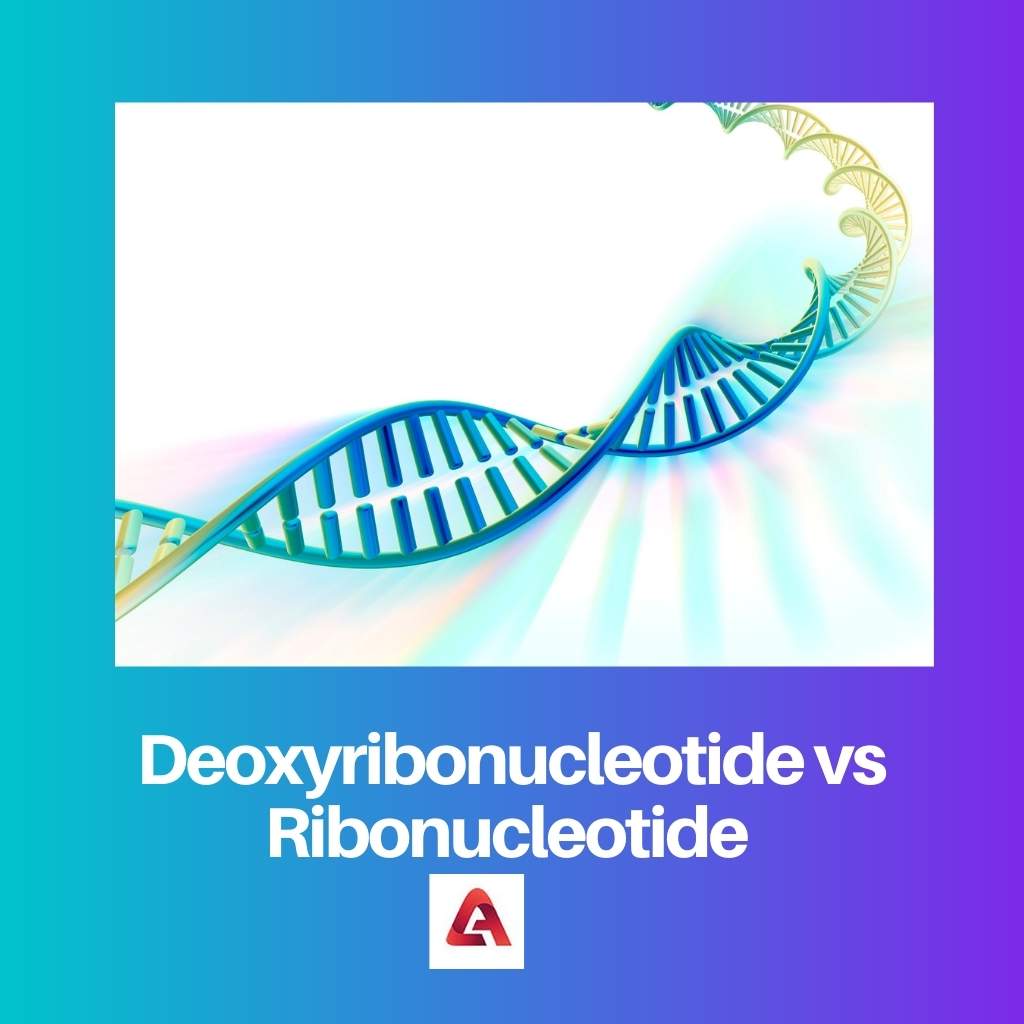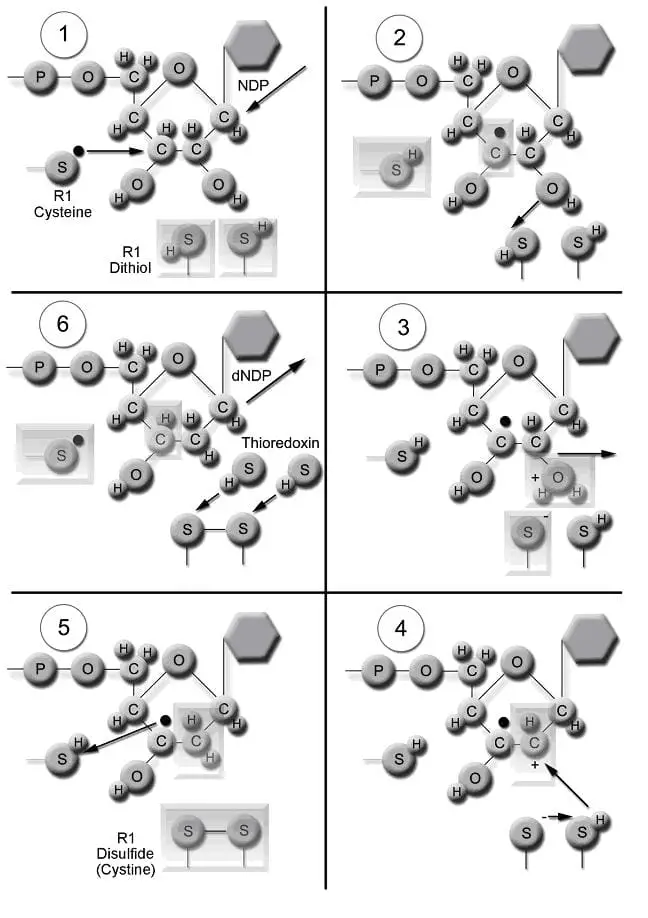We all are aware of the terms DNA (Deoxyribonucleotide acid) and RNA (Ribonucleotide acid).
These two microscopic molecules, specifically DNA and RNA, look similar and even work quite similarly.
Key Takeaways
- Deoxyribonucleotides are building blocks of DNA, containing a deoxyribose sugar, a phosphate group, and a nitrogenous base.
- Ribonucleotides form RNA, consisting of a ribose sugar, phosphate group, and nitrogenous base.
- Both are essential for genetic material but differ in the type of sugar they contain, affecting DNA and RNA structure and function.
Deoxyribonucleotide vs Ribonucleotide
Deoxyribonucleotide is a nucleotide that contains deoxyribose and consists of three parts: a nitrogenous base, a deoxyribose sugar and one phosphoryl group. A ribonucleotide is a type of nucleotide that contains ribose as the pentose component and is the basic monomeric building block for RNA.

Thymine, guanine, adenine, and cytosine are four of the nitrogenous bases which occur in DNA. In the cell, DNA occurs as a type of nucleic acid with the role of the hereditary molecule.
Ribonucleotide is the precursor of an RNA molecule. In the cell, ribonucleotide is the structure of nucleotide, which is made up of sugars of ribose.
Comparison Table
| Parameters of Comparison | Deoxyribonucleotide | Ribonucleotide |
|---|---|---|
| Interpretation | A nucleotide is a constituent of DNA and contains deoxyribose. | A nucleotide is a constituent of RNA and contains ribose. |
| Basic unit | DNA | RNA |
| Pentose sugar component | Deoxyribose | Ribose |
| Splicing | Do not allow | Allow |
| The molecule at ‘2’ carbon | H atom | OH atom |
What is Deoxyribonucleotide?
The deoxyribonucleotide is mainly a nucleotide that consists of deoxyribose. They are the monomeric unit of DNA (deoxyribonucleic acid) which is the informational biopolymer.
In the analog of ribose, the hydrogen atom replaces the hydroxyl group of the 2’-carbon. The phosphoryl group simply attaches itself to the deoxyribose monomer.
Deoxyribonucleotide may be designated based on the number of phosphates that make up the compound are triphosphate (three phosphate groups), diphosphate (two phosphate groups),
or monophosphate (one phosphate group).
Deoxyribonucleotides may be available from the breakdown of endogenous materials from deoxyribonucleotidic or from dietary constituents.

What is Ribonucleotide?
A ribonucleotide is also a form of nucleotide in which the ribose is a sugar component. A nucleotide is considered the nucleic acids (DNA and RNA) basic building block.
When an enzyme ribonucleotide reductase reduces the ribonucleotides, it may also be referred to as a precursor to deoxyribonucleotides.
Both pyrimidines and purines are synthesized from components specifically derived from the precursors of carbon dioxide, amino acids, ammonia, and ribose-5 phosphates.
The one nucleotide 5’-phosphate group is linked to the next nucleotide 3’-hydroxyl group, which creates a backbone of alternating pentose and phosphates residues. Each end of the polynucleotide does not have a phosphodiester bond.

Main Differences Deoxyribonucleotide and Ribonucleotide
- In terms of pentose sugar, deoxyribonucleotide’s pentose sugar does not contain an OH group at the position of ‘2’, whereas ribonucleotide’s pentose sugar contains an OH group at the position of ‘2’.
- In deoxyribonucleotide, the DNA is the main constituent in which methylated bases occur frequently. On the other hand, the RNA-modified bases occur more frequently.
- https://www.tandfonline.com/doi/abs/10.1080/07391102.2004.10506998
- https://cshperspectives.cshlp.org/content/2/4/a005439.short

This content is quite relevant to molecular biology and should be kept for future reference
This is information is very interesting, I always wanted to learn more about DNA and RNA
Yes, it is very accurate and useful information
I love how detailed all the information is, it’s incredible
This is a valuable resource for everyone who wants to understand the molecular makeup of the cell
A comprehensive review of DNA and RNA, clearly and precisely explained
The article is very well written and instructive
This is definitely going to help me with my college studies
I totally agree, it’s very educational for students
This article meets high standards of scientific writing
The detail is incredible, and the references provided give it significant authority
I find the comparison between the two molecules particularly useful
I also think the comparison gives a clear understanding of the topic
This article is a great source of information about DNA and RNA, their differences and the importance in the cell